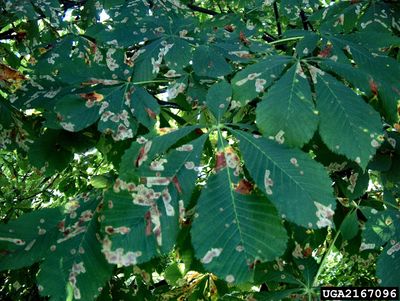What’s Wrong with My Horse Chestnut Tree?
As with all trees, there is always a chance of pest infestation and disease infection. These trees are popular but have recently experienced serious health problems from the horse chestnut leaf miner and bacterial bleeding canker. How can we avoid horse chestnut problems like this in our trees? Here are some tips for identification of horse chestnut issues and how to avoid the problems.
Horse Chestnut Leaf Miner
Horse chestnut leaf miner feeds on leaves of the tree. All it takes is one infected horse chestnut seedling and then problems with horse chestnut leaf miner begin. The damage from these pests is largely aesthetic and decreases their vigor but doesn’t cause any actual health problems for the tree. However, since the tree’s appearance is a large part of its value, we want to keep them vigorous and pest free. You may be wondering, is my horse chestnut sick? Not all horse chestnut trees are susceptible to this pest. Keep an eye on the leaves of your tree for spots that first look bleached, then turn brown and roll up early but do not drop from the tree. Report this to your local county extension office. Also, consider adding beneficial insects to the area.
Bacterial Bleeding Canker
Bacterial bleeding canker has also caused problems to horse chestnut trees. Previously caused by two Phytophthora pathogens, damage now appears to be caused by the bacterial pathogen, Pseudomonas syringae pv aesculi, according to Forest Research. Bacteria may enter through pruning cuts or spots where the tree has mechanical damage, such as from lawnmowers. Bleeding canker causes problems both internally and on the outside of the tree and may cause death. You may first notice bleeding lesions, an unusual colored liquid oozing from patches of dead bark on stems or branches. The liquid may be blackish, rusty-red, or a yellowish brown. It may also appear near the bottom of the trunk. The sap may be clear or cloudy in spring, dry up during hot, dry summers, and return in autumn. Lesions may eventually surround the tree or its branches, causing leaves to yellow. Decay fungi may attack the wood exposed by the lesions. Breathable tree wrap may help with this situation, as well as pruning out damaged branches far below the infection. Avoid pruning in spring and autumn when the bacteria are most active.
